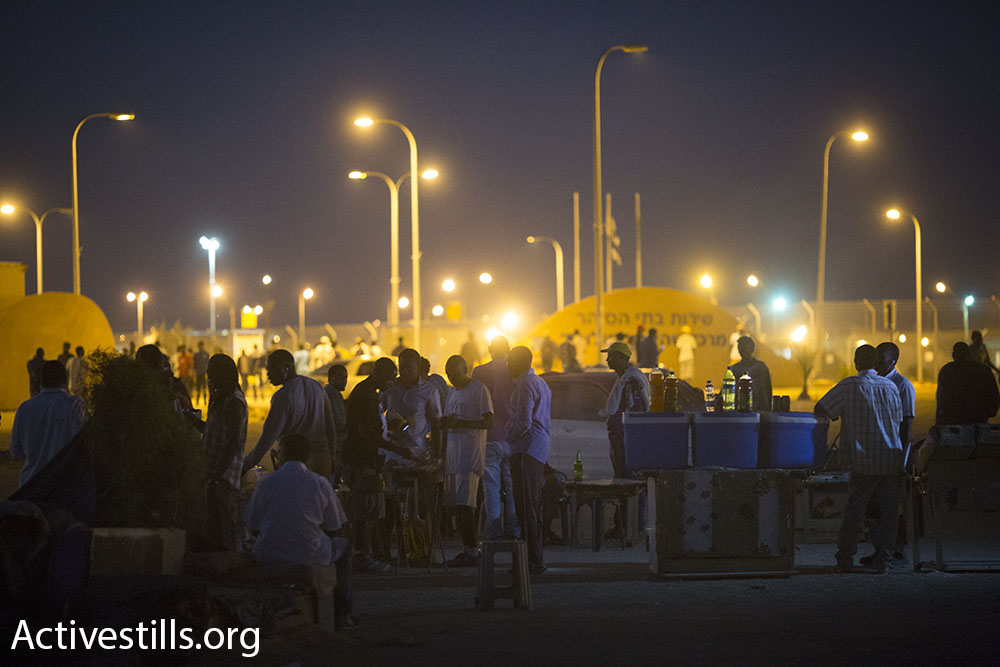When I meet Jack outside the “Holot” desert detention facility in southern Israel, currently home to some 1,900 asylum seekers from Sudan and Eritrea, the first thing he wanted to tell me is what bothers him about the Israelis that come to visit him and his friends.
“Not many people come to visit us at Holot. The few that do come — they help us, and that’s great. But that is not going to change our situation here in Israel. We expect every Israeli to try and affect change through the political system — specifically, the government’s policy toward us, the refugees,” he says.
I met Jack almost exactly a year ago, when hundreds of asylum seekers detainees in Holot decided to up and leave the detention facility and march toward the Egyptian border, demanding that they be allowed to leave Israel.
They had lost hope of being recognized as refugees in Israel, they were unwilling to resign themselves to indefinite detention in the Israeli desert, and thought just maybe they could raise some international awareness. They hoped they could push the United Nations to address their refugee claims.
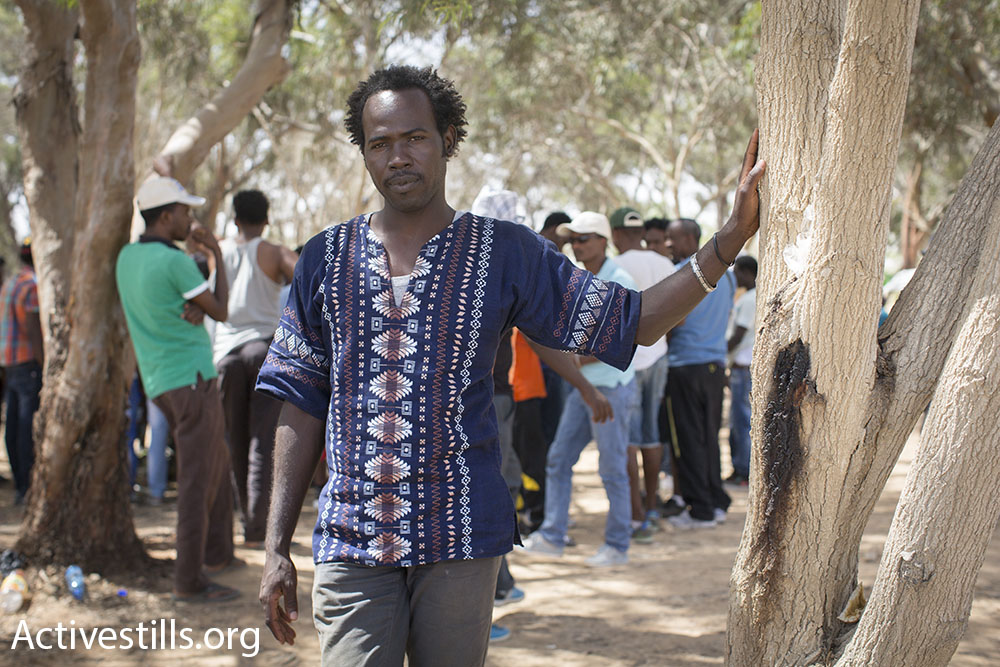
I had not seen Jack for exactly one year so I went down to Holot to meet him one afternoon last week. As I arrived, many of the detainees were taking advantage of the waning daylight hours when the heat breaks just long enough to take a walk or go for a run.
The asylum seekers detained at Holot are allowed to leave the facility during the day but they must be back in time for a 10 p.m. roll call. Because the detention facility is nearly 50 miles from the closest city, Beersheba, and without any real planned activities, many of the asylum seekers simply wander around the desert around the prison.
Like most of the people who marched on the Egyptian border a year ago, Jack is still detained at Holot. In the year that passed, Israel’s High Court struck down — for the second time — the law that authorized the indefinite detention of African asylum seekers. In response, the Knesset passed a new version of the law, this time limiting detention at Holot to 20 months and reducing the number of times detainees must be present for roll call.
Jack says he sleeps most of the day, breaking up his waking hours by teaching English and Hebrew to his bunkmates. His friend Tishome, from Eritrea, who was one of the leaders of the march on the border, joins us outside Holot’s gates at one of the picnic tables that make up its visiting area. Israel calls Holot an “open facility,” but authorities do not allow visitors inside – definitely not journalists.
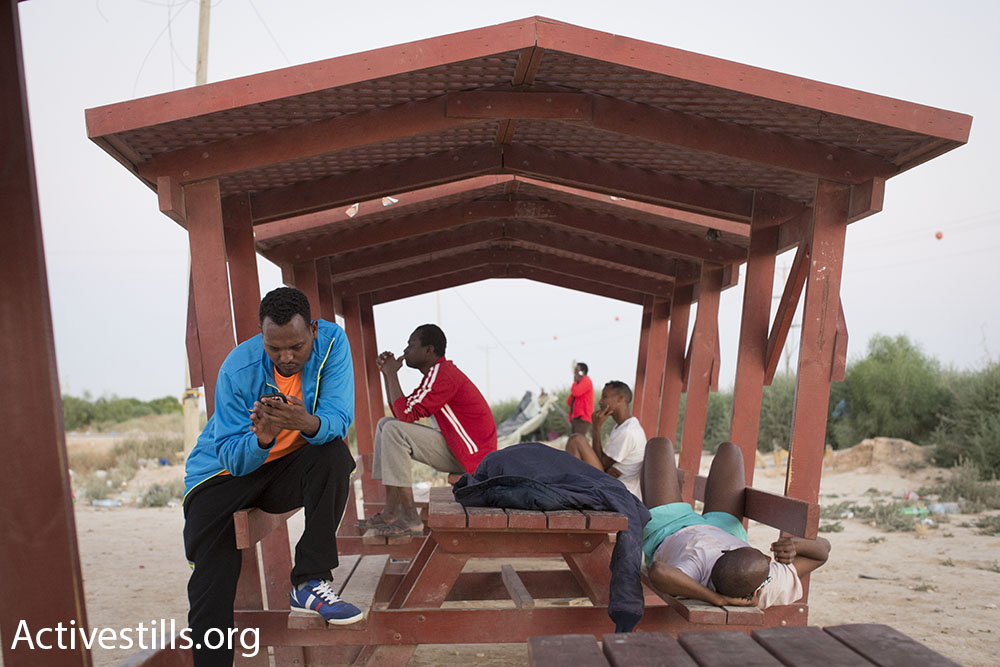
Jack and Tishome were sent to Holot in February 2014. They arrived at the open prison one day apart. Jack is originally from Darfur and lived and worked in Jerusalem until he was imprisoned for being an asylum seeker. Tishome is from Eritrea and worked at a hotel in Eilat until he was sent to Holot.
Read also: The origins and politics of Israel’s refugee debate
The march last year was an act of desperation, Tishome explains. “We marched to the Egyptian border hoping that the UN would come and help us. We knew that the chances of the army actually opening the border and letting us cross were next to nothing, but we wanted to try.”
“The march and our time along the border was physically difficult,” he continues, “but it’s better to suffer for a short period of time and then receive protection than to wait aimlessly in prison for years and suffer mentally.”
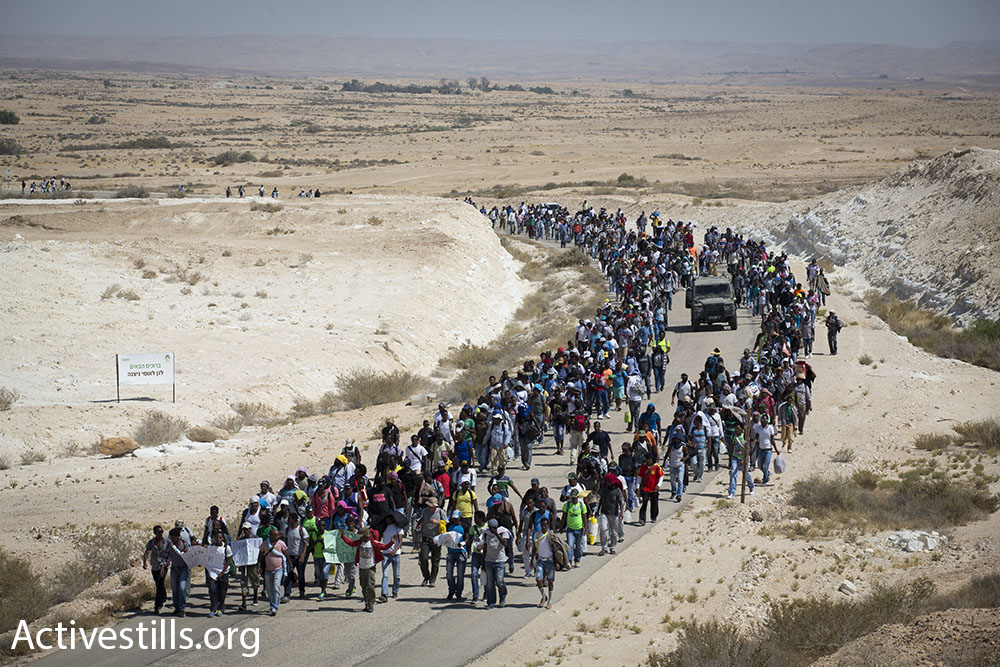
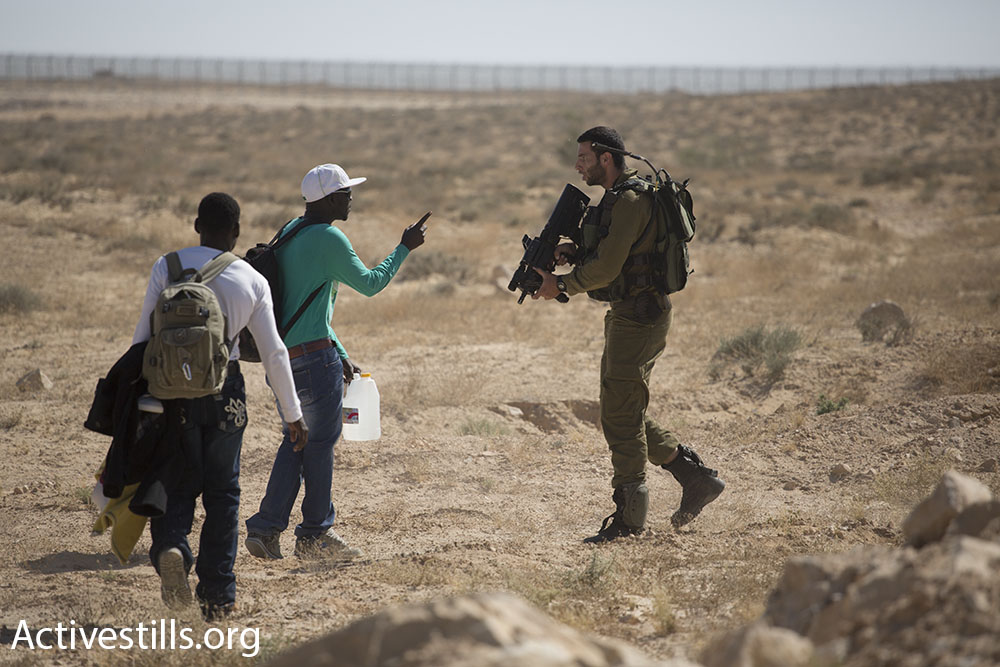
That same Friday one year ago, after dozens of kilometers of marching, the Israeli army stopped the asylum seekers from approaching the actual Egyptian border. The soldiers began pushing them and threatening them with their weapons, they recall. So they decided to back up a few hundred meters, to a small forest, Nitzana, and to set up an improvised encampment next to the border. They stayed there for three days.
According to the law in force at the time, asylum seekers could not be brought back to Holot until they had been AWOL for two full days.
“We knew that the police would come after 48 hours but we never expected such violence,” Tishome says of the way police and immigration officers cleared their camp. “Officers hit us and used pepper spray and then sent us to prison for three months. We didn’t imagine that we would be punished for daring to protest.”
On the third day of the protest, June 29, 2014, hundreds of riot police, mounted officers and immigration officers surrounded the protest camp. The police officers wore black gloves and the immigration officers latex gloves.
“When they came to evict us, I asked one of the officers to let us cross into Egypt,” Jack tells me. “But they were agitated. They started hitting us and throwing us to the ground. Four officers carried me onto a bus, each of them holding one of my limbs.”
“I’ve been at a lot of protests,” Jack says. “This was different.” A total of 779 asylum seekers were arrested that day.

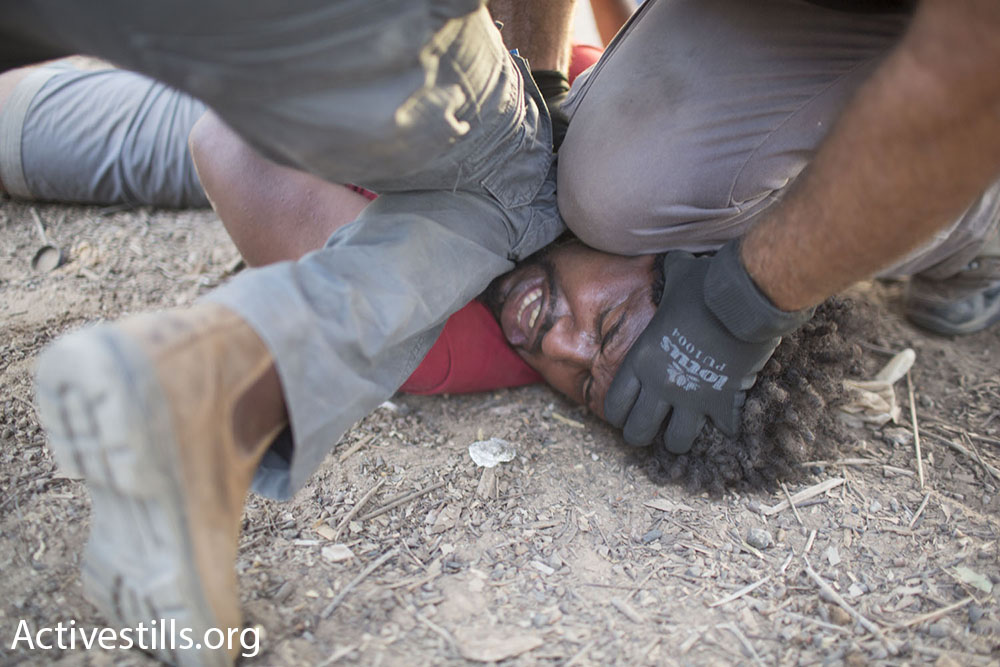

As we talk outside of Holot, the foot traffic in and out of the facility starts to get heavier. The detainees say the food in Holot is not healthy, or very good, and they are not allowed to bring food in from the outside. Some start hiking toward barbeque pits and sitting areas they have built in the surrounding hills. Others eat at makeshift restaurants along the facility’s gates, established by a few detainees with an entrepreneurial spirit.
In the year since the border protest camp was broken up, the asylum seekers who took part in the protest were sent to conventional prisons for a number of months — because they had left Holot for more than 48 hours. Unlike in Holot, where they were allowed to have cellular phones and laptop computers, in the real prison they had no contact with the outside world. They weren’t able to hear see how, or if, for that matter, the world had reacted to their protest.
“I was very depressed when I was in [the prison],” Jack tells me about the time after he was arrested. “I wasn’t disappointed about being in prison, because it was the expected consequence of our actions. I was disappointed by the United Nations. We marched toward the border with the aim of pushing the local UN office into action. Their representative is located at Nitzana, and still, they are not doing anything for us.”
In reality, there is no UN post along the Israel-Egypt border, but at the time that fictional plot of land was the marchers’ declared destination. That the strip of UN-controlled land does not exist did not deter the protesters at the time, and if anything, it was symbolic of their demands — that the absentee international community take responsibility for them.
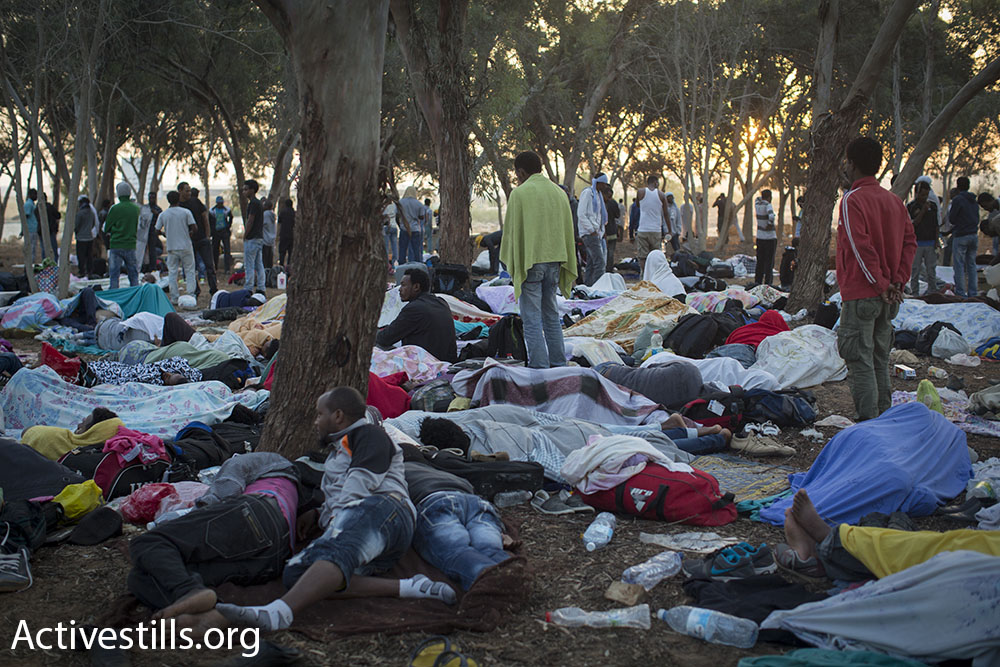
Thousands of Sundanese and Eritrean asylum seekers have left Israel in the past year, mostly for Rwanda and Uganda. The Israeli government gives them cash and promises them some sort of status in their destination countries. Uganda has officially denied that it has any agreement to accept asylum seekers from Israel. Rwanda has never confirmed such a deal.
Read also: ‘I believed them when they said I could stay in Uganda’
“People didn’t leave Israel because of the police violence,” Jack says of all those who have left Israel. “People are leaving because they understand that the Israelis have closed off their hearts. They have closed their minds and closed their ears. The only thing they tell us is to leave.”
“We are willing to leave,” Jack says, “but to where? We need help, and nobody is answering our calls.”
“The people who left,” he continues, “are either in Sudanese prisons or are still wandering, looking for a safe place to live. Some of them died in the Mediterranean trying to get to Europe. They chose to take a deadly chance in the sea instead of waiting 10 years in prison in Israel.”
I take out my laptop and show them photos of the police raid on their encampment a year earlier, which they are seeing for the first time. Tishome immediately spots a friend of his who has since left for Uganda. Jack sees another who left for Sudan. They ask me to blur the faces of the people who returned to their homelands, to protect their identities.
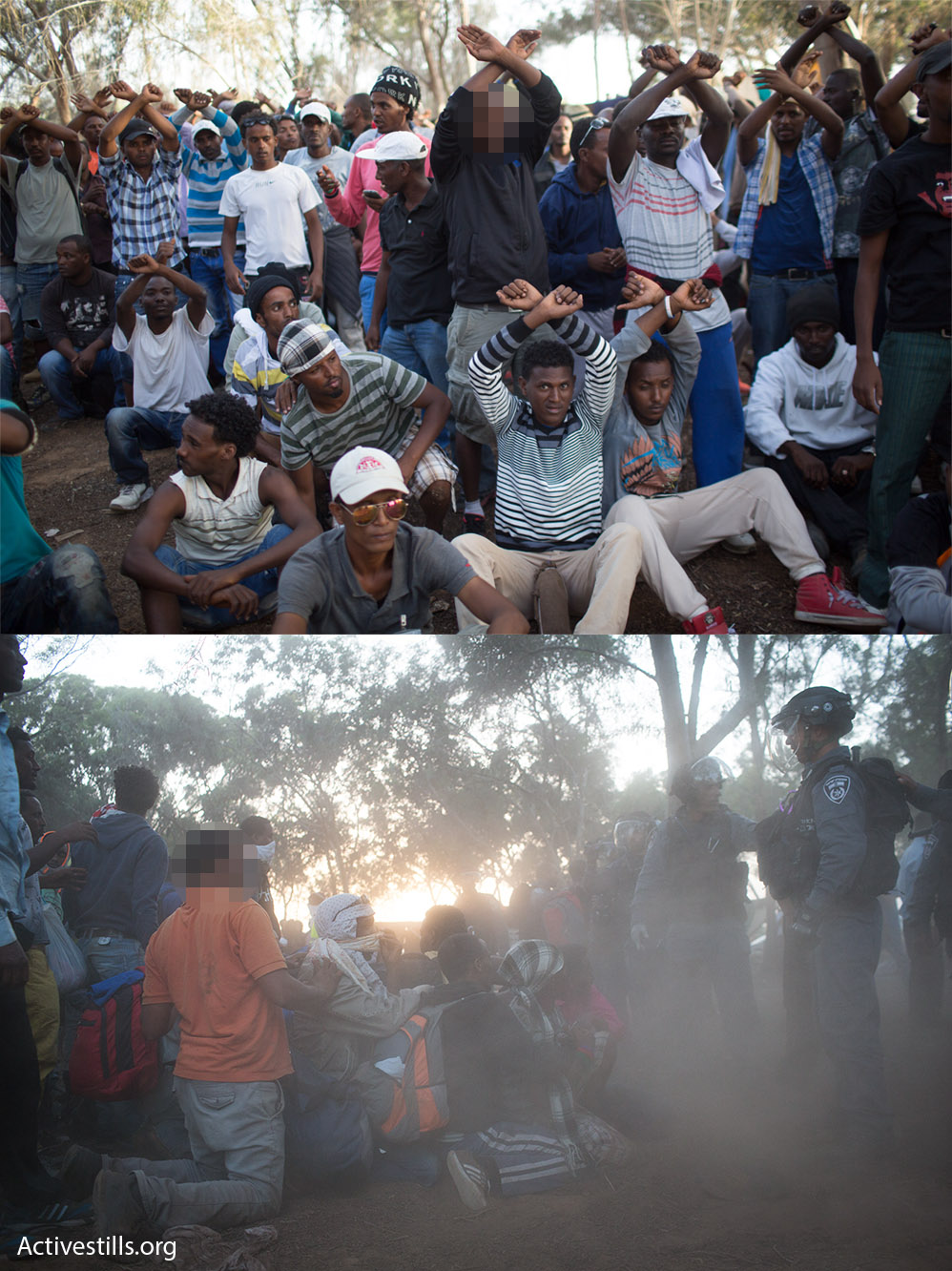
“People are willing to take a risk and to leave,” Tishome explains, “with the hope that they will find a better future somewhere else. People are suffering here, not only in Holot. The main problem is the government’s policy not to recognize a single refugee. We see that Israel doesn’t want us here, and when you’re not wanted you find your way out.”
The pressure seems to be working. Sigal Avivi, an activist working with asylum seekers who visits Holot regularly, says that state authorities have thus far refused to say how many people have left. “According to our own assessments,” however, “more than 9,000 asylum seekers have left Israel since the start of 2014.”
“More and more people are leaving since Holot was established,” Tishome explains, adding that. “the pressure on us has increased. Thousands have left because there is no future here, there is no hope that anything will change. With all of the racism, people have simply given up.”
Most of those who leave do not get legal status in the countries where they are sent by Israel, the two men explain, so they continue seeking refuge — often times in Europe. The boats that carry the asylum seekers from North Africa to the shores of Europe are notoriously unsafe and thousands have died on the journey in the past year or two. Others have met even more terrifying fates.
“One person who was in Holot, a friend of ours, was caught by ISIL in Libya on his way to Europe,” Tishome recalls. “They cut off his head and we recognized him in a video ISIL filmed. Out of 49 people who they executed, three of them came from Israel.”
But ISIL is not the biggest threat for those who leave Israel. “It’s hard to even imagine how many people have drowned in the sea and to this day, we don’t know what happened to so many others. Some died in the desert. Some are stuck without any money or documents in Rwanda or Uganda.”
So why do people keep leaving?
Asylum seekers in Israel do not leave in order to move to Rwanda or Uganda, Tishome explains. They want to start their quest for asylum from scratch, again. “We left Eritrea and Sudan in order to flee from danger and now in Israel we are doing the exact same thing: you embark on your journey, just as you did years ago in your home country, and you hope for the best.”
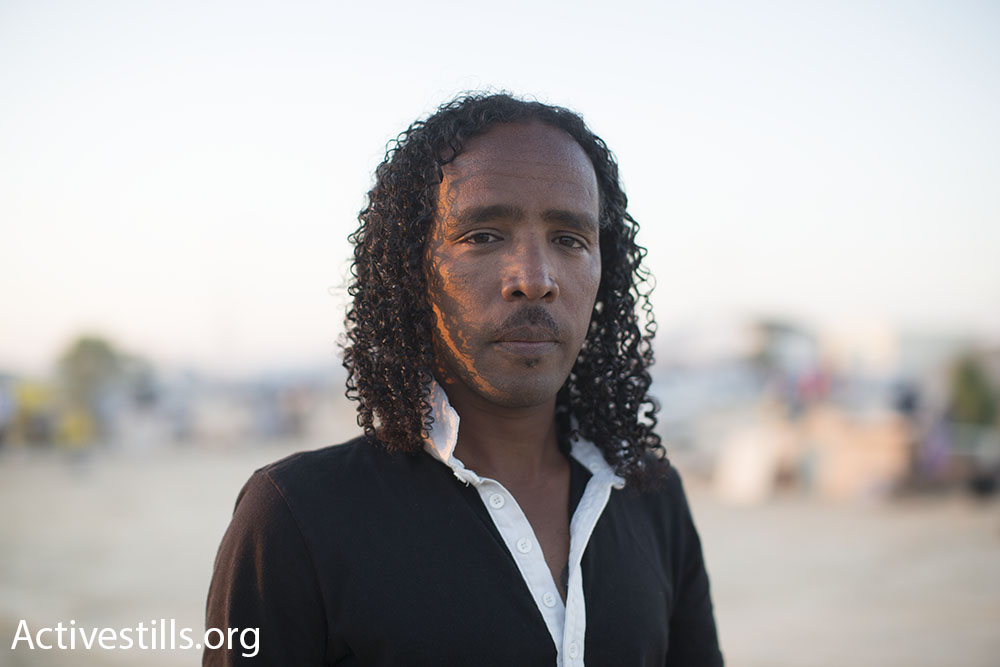
Most people who leave Israel, who leave Holot, the pair explains, don’t tell anybody until the day they are supposed to leave for the airport.
“They know what they are doing, that they are taking an incredible risk,” Tishome adds. “Nobody would let their friend do such a thing, so the people who plan to leave keep it a secret.”
“I would tell a friend who is leaving: ‘stay, maybe things will change.’ But somebody who is leaving doesn’t want to hear such things,” he explains. “Some of them only call you from the airport. You can only wish them good luck and pray for them.”
It has been Israel’s expressed policy for years to encourage asylum seekers to leave Israel. Human and refugee rights organizations have reported that pressure exists even within the walls of Holot, which itself is a form of pressure to leave.
“I went to go collect my weekly stipend and they told me to go home!” Tishome says. “I never expected them to actually say such things. Even the doctor in Holot will tell you: ‘If you’re not happy here, leave, go back to your country, your country is better’.”
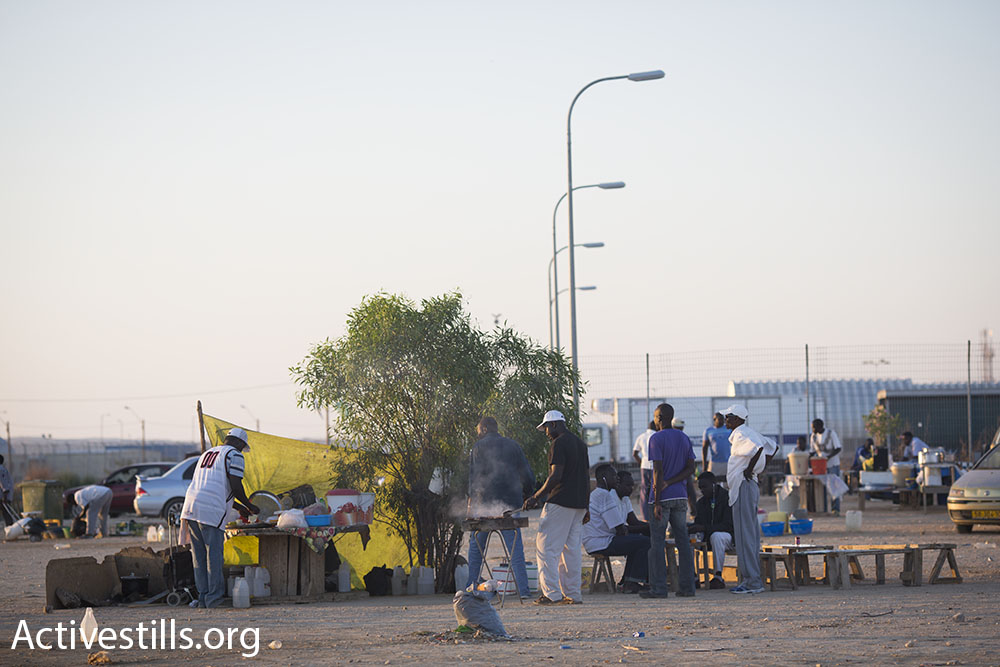
A new strategy
The protest march to the Egyptian border was not the first time asylum seekers in Israel tried to get the attention of the public — in Israel and abroad. A year earlier, hundreds of asylum seekers marched out of Holot and headed toward Jerusalem. A few months later, tens of thousands of asylum seekers held massive protests in Tel Aviv and Jerusalem, and even managed to organize a general strike.
“The main goal of our protests is get our message across and to raise awareness of our problem in Israel and internationally,” Jack says. “Our message has been delivered throughout Israel, and overseas, most countries are aware of our situation. We haven’t finished our struggle and we are willing to continue fighting for our rights, but we don’t think that launching more and more protests will help us.”
The new strategy they lay out goes far deeper and takes a far longer view.
“In the past we fought for our rights in Israel, but today we are focusing our activities on changing the situation in the countries from which we came,” Tishome explains. “It’s a solution for the root of the problem, to improve the situation in your home country and then go back to live there with your people.”
In the past we fought for our rights in Israel; today we’re focusing on changing the situation in the countries we came from.
But Tishome insists that the change in strategy is not a response to, or a result of the difficult conditions faced by asylum seekers in Israel. “People in Canada and Europe who have refugee status are also fighting to change the situation in Eritrea.”
As 10 p.m. approaches the asylum seekers outside the detention center’s gates prepare to go back inside for roll call. The owners of the makeshift restaurants clean their dishes and wooden tables. Jack and Tishome finish up their Sudanese meat stew, vegetables and flatbread. “The food inside is always either too salty or not cooked enough,” Jack says.
“I’m optimistic because that is how god made us,” Tishome says when I ask how they survive inside the detention center. “The fact that we have hope allows us to survive, because I have hope that tomorrow will be better. If you believe that you’re going to die tomorrow, you’ll never act today.”
